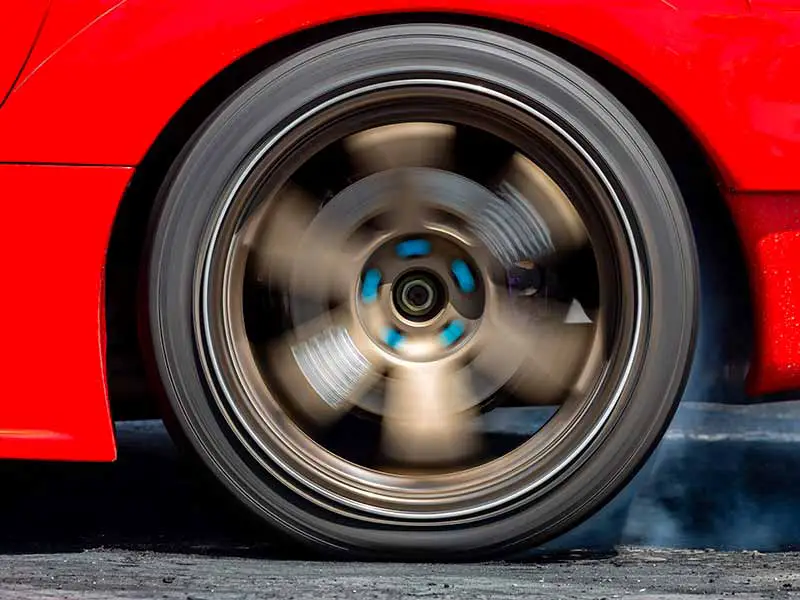Did you know that your tires play a crucial role in your vehicle’s performance and safety? Choosing the right speed rating for your tires can make all the difference in how your car or truck handles, especially at higher speeds.
Understanding the H Speed Rating will help you make informed decisions about the tires best suited for your vehicle.
H Speed Rating
The H Speed Rating is a tire classification indicating a top speed capability of 130 mph (209 km/h). These tires are suitable for various passenger cars and trucks, offering a balance of performance, stability, and comfort for everyday driving.
In this article, we’ll provide an overview of speed ratings, delve into the characteristics of H-rated tires, compare them to other speed ratings, and discuss how to choose the right speed rating for your vehicle.
We’ll also share some useful tips on maintaining tire safety and performance to ensure a smooth and enjoyable driving experience.
Let’s take a closer look.
Speed Ratings: An Overview
Speed ratings are a way to indicate the top speed a tire can safely handle when it’s properly inflated and loaded.
They are established by tire manufacturers based on tests that measure a tire’s performance under controlled conditions.
It’s important to note that the speed rating is not a recommendation for driving at high speeds, but rather a measure of a tire’s performance capabilities.
How Are They Determined?
Tire manufacturers perform tests to determine the speed rating of their tires. These tests involve running the tires at increasingly higher speeds in a controlled environment. During the tests, the tire’s temperature, stability, and overall performance are monitored closely. The highest speed at which the tire maintains its performance without failing is considered its speed rating.
Common Speed Ratings And Their Meanings
Speed ratings are usually represented by a letter found on the tire’s sidewall, which corresponds to a specific top speed.
Here are some common speed ratings and their associated top speeds:
- L (75 mph)
- M (81 mph)
- N (87 mph)
- P (93 mph)
- Q (99 mph)
- R (106 mph)
- S (112 mph)
- T (118 mph)
- H (130 mph)
- V (149 mph)
- W (168 mph)
- Y (186 mph)
- Z (over 186 mph; for high-performance vehicles)
It’s important to match the speed rating of your tires to the requirements of your vehicle, as well as your driving habits and conditions.

H Speed Rating: In-Depth
H-Rated Tire Characteristics
Top speed capability
H-rated tires are designed to handle a top speed of up to 130 mph (209 km/h). This speed rating is well-suited for many passenger cars and light trucks on the road today.
General performance
H-rated tires strike a good balance between performance and comfort. They generally offer stable handling, good traction, and a comfortable ride. H-rated tires are versatile and perform well in various driving conditions, including city driving, highway cruising, and light off-roading.
Suitable vehicles for H-rated tires
Passenger cars
H-rated tires are a popular choice for a wide range of passenger cars, from compact vehicles to sedans and small SUVs. They’re ideal for drivers who value a comfortable ride and reliable performance without the need for extreme speed capabilities.
Trucks
Light trucks, such as pickups and some larger SUVs, can also benefit from H-rated tires. These tires provide sufficient performance and durability for the average truck owner’s needs.
Benefits Of Using H-Rated Tires
Balance between performance and comfort
H-rated tires provide a great combination of reliable performance, stability, and a comfortable ride. They’re well-suited for everyday driving and can handle varying weather conditions.
Good for a variety of driving conditions
H-rated tires are designed to perform well in different driving situations, making them a versatile option for many drivers. Whether you’re navigating city streets, cruising on the highway, or tackling light off-road terrain, H-rated tires are up to the task.

Comparing H Speed Rating To Other Ratings
Lower speed ratings
S and T rated tires
S-rated tires have a top speed of 112 mph (180 km/h), and T-rated tires can handle up to 118 mph (190 km/h). These tires are often found on family sedans, minivans, and some compact cars. S and T rated tires generally prioritize comfort and a smooth ride over high-speed performance.
Performance differences
Compared to H-rated tires, S and T rated tires may provide a more comfortable ride, but with slightly less high-speed stability and cornering capabilities. H-rated tires offer better overall performance, especially at higher speeds, while still maintaining a good level of comfort for everyday driving.
Higher Speed Ratings
V, W, Y, and Z rated tires
V-rated tires have a top speed of 149 mph (240 km/h), W-rated tires can handle up to 168 mph (270 km/h), Y-rated tires have a maximum speed of 186 mph (300 km/h), and Z-rated tires are for vehicles with top speeds over 186 mph.
These higher speed ratings are typically found on high-performance vehicles, such as sports cars and luxury sedans.
Performance differences
V, W, Y, and Z rated tires generally offer better high-speed performance, handling, and cornering capabilities compared to H-rated tires. However, these higher performance tires may compromise ride comfort and be more sensitive to road imperfections. They also tend to have a shorter tread life and may be more expensive than H-rated tires.

Choosing The Right Speed Rating For Your Vehicle
Factors To Consider
Vehicle’s recommended speed rating
The first thing to consider when choosing a tire’s speed rating is your vehicle’s manufacturer recommendations. You can usually find this information in your owner’s manual or on the tire information placard located on the driver’s side door jamb or inside the glove compartment. It’s important to follow these recommendations to ensure optimal performance and safety.
Driving style and habits
Your driving style and habits also play a role in selecting the right speed rating for your tires. If you mostly drive at moderate speeds and prioritize ride comfort, a lower speed rating, such as S or T, may be suitable. On the other hand, if you prefer a more spirited driving experience and often travel at higher speeds, an H-rated or higher tire may be a better fit.
Road conditions
The types of roads you frequently travel on should also be considered when choosing a tire’s speed rating. If you drive on well-maintained highways and city streets, an H-rated tire should provide sufficient performance and comfort.
However, if you often drive on rough, uneven surfaces or in challenging weather conditions, you might benefit from a tire with a higher speed rating that offers better handling and traction.
Importance Of Selecting The Correct Speed Rating
Choosing the right speed rating for your vehicle is crucial for maintaining safety and performance. Using tires with a lower speed rating than your vehicle’s recommendations can lead to reduced handling capabilities, overheating, and tire failure.
On the other hand, using tires with a higher speed rating than necessary may result in a harsher ride and increased tire wear.

Tips For Maintaining Tire Safety And Performance
Regular Tire Inspections
Periodically inspect your tires for signs of wear, damage, or punctures. Look for uneven wear patterns, cracks, bulges, or objects embedded in the tread. Address any issues promptly to ensure the safety and longevity of your tires.
Proper Tire Inflation
Maintain the correct tire pressure as recommended by your vehicle’s manufacturer. Underinflated tires can cause poor handling, increased tire wear, and reduced fuel efficiency, while overinflated tires can lead to a harsh ride and increased risk of a blowout. Check your tire pressure at least once a month and before long trips, making adjustments as needed.
Tire Rotation And Alignment
Rotate your tires every 5,000 to 8,000 miles (8,000 to 13,000 km) or as recommended by your vehicle’s manufacturer. This helps ensure even wear across all tires, prolonging their life and maintaining consistent performance. In addition, have your wheel alignment checked periodically to prevent uneven tire wear and steering issues.
Replacing Tires As Needed
Replace your tires when the tread depth reaches 2/32 of an inch (1.6 mm) or when the built-in treadwear indicators become visible. Driving on worn tires can lead to reduced traction, poor handling, and an increased risk of hydroplaning. When replacing tires, it’s generally best to replace all four at once, or at least replace them in pairs (both front or both rear tires).
Resources
Below are some links you may find helpful when learning about tires
- H-rated tires with shorter life spans become more common – Consumer Reports
- Tire speed rating chart & tire tread life – BFGoodrich Tires
Final Thoughts
Your tires play a crucial role in your vehicle’s performance and safety. The key takeaway from this article is that H-rated tires strike a good balance between performance, stability, and comfort, making them suitable for various passenger cars and trucks.
To quote the famous race car driver Mario Andretti, “The tires are called the contact patch. It’s the only thing connecting you to the road.” This emphasizes the importance of not only selecting the right tires but also properly maintaining them to ensure the best possible connection to the road.
By following the guidelines and tips outlined in this article, you can make informed decisions about your tires and enjoy a safer, more comfortable driving experience.
Good luck and happy motoring.





